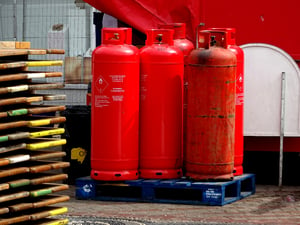As the Internet of Things expands and the world becomes more connected, CSPs are vying to provide IoT entrepreneurs with the IT stacks and platforms they need to deliver IoT applications quickly and sustainably. Operators such as Vodafone and Deutsche Telecom have taken the lead with their IoT platforms, but they aren’t the only competition; tech companies such as Google and Cisco also boast IoT enablement capabilities.
CSPs and resellers are seeking to evolve their roles from connectivity partners to IoT enablers, and claim that the key challenges will be security and connection cost. However, it appears that they have overlooked a fundamental aspect of complex IoT ecosystems – monetisation. How will they enable feasible business cases and provide a value-driven approach to delivering complex IoT applications? CSPs and resellers may be comfortable providing basic M2M products sold on a subscription basis, but this is a world away from IoT-as-a-Service monetisation models. IoT serves the user from a different commercial angle, converting products into services, and making them more consumable, more engaging, more serviceable, more predictable and, most importantly, more addictive. The business model has changed, and CSPs and resellers must adapt. If they are to profit from IoT in the near future, they must embrace monetisation models that would be considered unconventional in the traditional telco world.
CSPs and resellers may be comfortable providing basic M2M products sold on a subscription basis, but this is a world away from IoT-as-a-Service monetisation models. IoT serves the user from a different commercial angle, converting products into services, and making them more consumable, more engaging, more serviceable, more predictable and, most importantly, more addictive. The business model has changed, and CSPs and resellers must adapt. If they are to profit from IoT in the near future, they must embrace monetisation models that would be considered unconventional in the traditional telco world.
For CSPs, true value within IoT will not come from minutes or data, but from application events and consumption. This shift in where value is created will also extend to B2B resellers; rather than selling a batch of laptops to an enterprise at unit price, for example, they may offer a new ‘pay-per-update’ model, thus re-commercialising the product into a service.
Gas-as-a-Service
A particularly exciting example of this serviceable approach to IoT is the Mexican gas replacement scenario. In Mexico, most households use refillable gas canisters to meet their energy needs. However, a lack of ingenuity in the purchasing process leads to several inconveniences for the customer. As it isn’t possible to tell how full a canister is, unless it is completely empty, customers never know if they have enough gas left to complete essential domestic activities, such as cooking and washing. And as they can’t see exactly how much gas is in a canister, they can’t be certain that their supplier has fully refilled the tank – unscrupulous suppliers may only part-fill canisters to reduce costs - or if the tank needs refilling at all.
 IoT provides a solution to these inconveniences. By attaching a sensor to each canister, customers can monitor gas levels and usage. As the process is digitalised, customers can check their gas levels via their phone, and order a refill at the tap of a screen. Some suppliers may even offer automatic refills based on real time usage, without the customer having to place an order. This causes the business model to change, so that rather than paying for a product (gas), customers pay for convenience and efficiency – Gas-as-a-Service.
IoT provides a solution to these inconveniences. By attaching a sensor to each canister, customers can monitor gas levels and usage. As the process is digitalised, customers can check their gas levels via their phone, and order a refill at the tap of a screen. Some suppliers may even offer automatic refills based on real time usage, without the customer having to place an order. This causes the business model to change, so that rather than paying for a product (gas), customers pay for convenience and efficiency – Gas-as-a-Service.
As well as the convenience of Gas-as-a-Service, customers may also save money - they have complete visibility of how much gas they have been supplied with, so they are less likely to be charged for more units than they received. Customers will be able to pay for gas by the unit, so they won’t have to wait until a canister is completely empty before getting it refilled, and they won’t have to pay for a full tank of gas each time. Paying by the unit ensures that customers will always have enough gas to meet their needs. This would be of particular benefit to customers of limited means.
But it isn’t just customers who benefit; knowing exactly which customers need to have their canisters refilled puts an end to wasted journeys, resulting in dramatic savings for suppliers.
If CSPs and resellers are to win bids for complex IoT projects such as this, they must consider how they would monetise the process, and collect and assure revenue. The monetisation model is completely different from selling M2M connections, so they need a new approach. To become true IoT service enablers, they must provide a full stack with monetisation capabilities, rather than following traditional telecom approaches that overlook the interoperable commercial value of IoT projects.
The most effective approach is to work in partnership with an IoT solution provider such as MDS Global. Our IoTMonetised solutions enable CSPs and resellers to deliver IoT applications with feasible monetisation models. Learn more >>
To discuss how MDS Global can help you to monetise business models, or to request a proof of concept, please contact us >>

